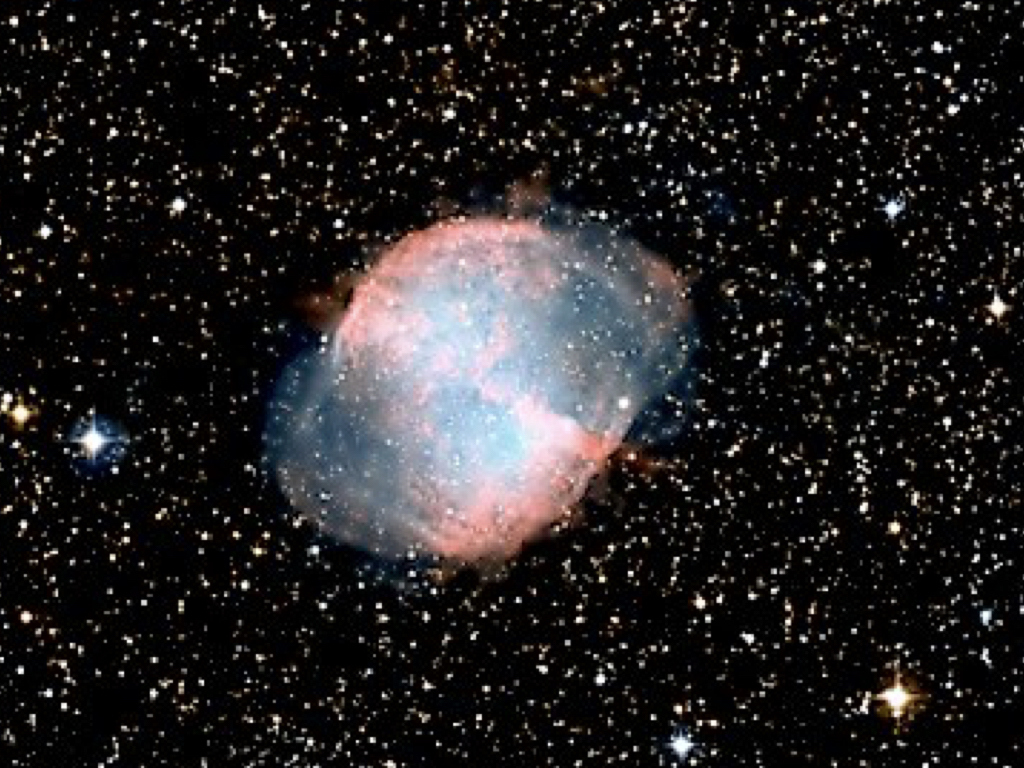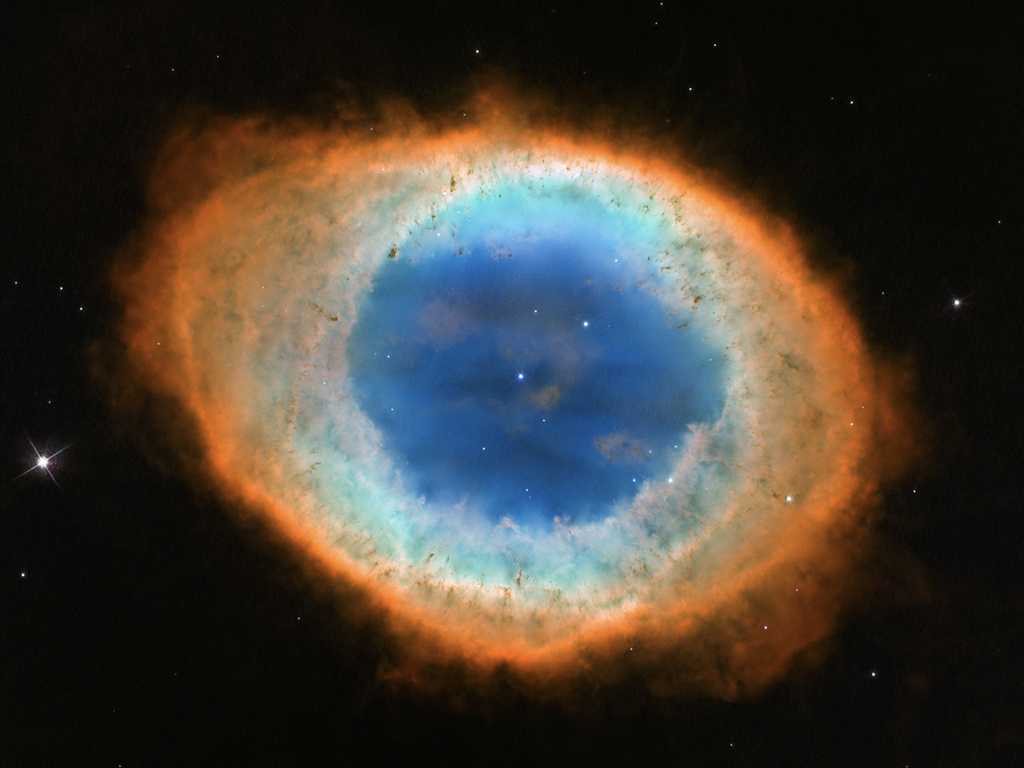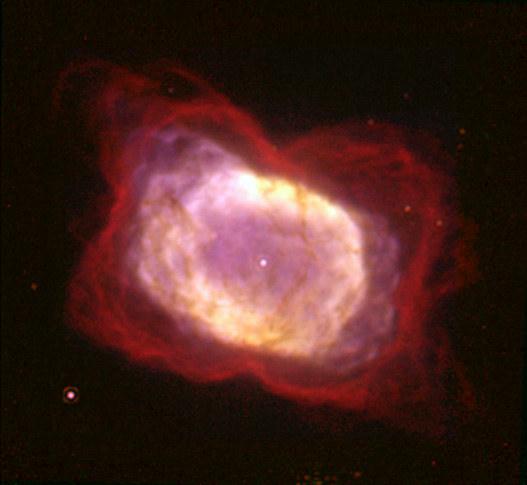Helium Hydride Detection Affirms Big Bang Creation Model
Astronomers’ unusual but effective means of detecting helium hydride has generated excitement among researchers by helping to account for the “missing helium hydride” in big bang creation models. This discovery also supports how the Bible describes the universe’s beginning, history, and structure.
Seminal figures such as Georges Lemaître, Albert Einstein, and Edwin Hubble are typically cited in science and history textbooks as the very first to describe the big bang characteristics of the universe. However, these three were upstaged by some 2,500 years or more by biblical authors Job, Moses, David, Isaiah, Jeremiah, and Zechariah, who repeatedly described the following four big bang cosmic characteristics:
- beginning of space, time, matter, and energy
- ongoing expansion from a spacetime beginning
- laws of physics that remain fixed and unchanged
- a law of decay that pervades the entirety of the cosmic spacetime realm
I cite the Bible passages where these cosmic features are described in this online article.1 In the same paper I explain why these four features imply, in a highly predictable way, that the universe must get progressively colder as it gets older.
Over the past century, astronomers have subjected the big bang creation model to over a dozen scientific tests. It has passed each of these tests with flying colors. For those interested in the details, I describe these tests and how the model has successfully passed them in my book The Creator and the Cosmos, 4th ed..2
Because of the obvious biblical implications of big bang cosmology and the challenge they present to non-Christian belief systems, every prediction arising from big bang cosmology warrants being put to the test. Just days ago, a team of ten astronomers led by Rolf Güsten published a paper in Nature in which they announced that their measurements had affirmed a major prediction of big bang cosmology.3 This discovery had eluded astronomers’ detection attempts for nearly half a century.
Big Bang Prediction: Helium Hydride
In the big bang creation model the universe begins with only one element, namely hydrogen. As the universe cools from a near infinitely high temperature, it spends less than a half a minute at the three-to-four minute mark after the cosmic creation event in the temperature range where nuclear fusion can occur. In this fraction of a minute about 25% of the primordial hydrogen by mass is fused into helium.
A challenge for big bang cosmology is to explain how the first stars can form from an elemental mix of 75% hydrogen and 25% helium. Astronomers determined decades ago and recently affirmed that molecular hydrogen (H2) is required to generate sufficient local gas cooling that stars can form from just hydrogen and helium.4
However, helium hydride (HeH+) is an essential precursor for the formation of molecular hydrogen. Without helium hydride in the universe, there is no possibility of stars. Without stars in the universe, there is no possibility of physical life.
Search for Helium Hydride
Stars and life obviously exist in the universe. But where is the helium hydride? Astronomers’ decades-long search for helium hydride in outer space had turned up empty—until now.
Beyond astronomers’ confidence in the big bang creation model, what had spurred the relentless search for helium hydrate was its discovery in the lab. The manufacture of helium hydride in the laboratory as long ago as 1925 established that the existence of helium hydrate was not a physical impossibility.5 In the late 1970s and early 1980s astronomers demonstrated that the production of helium hydride in astrophysical plasmas was possible.6Specifically, these studies showed that helium hydride was potentially detectable in planetary nebulae.
Planetary nebulae have nothing to do with planets. They are emission nebulae that consist of an expanding shell of ionized gas being ejected from red giant stars toward the end of their stellar burning phase. The best-known planetary nebulae are the Dumbbell Nebula (see figure 1) in the constellation Vulpecula and the Ring Nebula (see figure 2) in the constellation Lyra. Both are visible with binoculars.

Figure 1: Dumbbell Nebula (M27). Image credit: NASA/ESA/Digitized Sky Survey 2. Acknowledgment: Davide De Martin (ESA/Hubble)

Figure 2: Ring Nebula (M57). Image credit: NASA/ESA/Hubble Heritage (STScI/AURA)-ESA/Hubble Collaboration
Discovery of Helium Hydride
One planetary nebula is very young (only 600 years old) and especially dense. That planetary nebula, NGC 7027 (see figure 3), is also one of the visually brightest planetary nebulae. Like the Dumbbell and Ring Nebulae, it is easily visible in a pair of binoculars.

Figure 3: NGC 7027, the Brightest Known Super-Compact Planetary Nebula. Image credit: William B. Latter (SIRTF Science Center/Caltech) and NASA/ESA
Because NGC 7027 is bright and extremely compact, it is the ideal candidate for the detection of helium hydride. Even so, it took an extraordinary telescope using an extraordinary technique for Güsten’s team of ten astronomers to detect helium hydride.
Güsten’s team used NASA’s Stratospheric Observatory for Infrared Astronomy (SOFIA). SOFIA is the world’s largest airborne telescope. The telescope is mounted in a Boeing 747 jet plane. By being flown high in the stratosphere, SOFIA was able to detect the 149.1-micrometer spectral line of helium hydride, a detection that was impossible for ground-based telescopes.
Future observations of that spectral line promise to provide detailed insights into the formation of the universe’s first stars—details such as how many such stars form and how big these stars are. With the James Webb Space Telescope (scheduled for a 2021 launch) astronomers will finally possess the power to detect the universe’s first stars. With that detection, we can look forward to a much more detailed cosmic creation model. Meanwhile, thanks to the Güsten team’s discovery, a critical prediction—the presence of helium hydride—of the biblically predicted big bang creation model has been affirmed.
Featured image: The Cat’s Eye Nebula
Image credit: X-ray: NASA/CXC/SAO; Optical: NASA/STScI
Check out more from Reasons to Believe @Reasons.org
Endnotes
- Hugh Ross and John Rea, “Big Bang—The Bible Taught It First!” Facts for Faith (Quarter 3, 2000): 26–32, https://www.reasons.org/explore/publications/rtb-101/read/rtb-101/2000/06/30/big-bang-the-bible-taught-it-first.
- Hugh Ross, The Creator and the Cosmos, 4th ed. (Covina, CA: RTB Press, 2018), 19–222.
- Rolf Güsten et al., “Astrophysical Detection of the Helium Hydride Ion HeH+,” Nature 568 (April 17, 2019): 357–59, doi:10.1038/s41586-019-1090-x.
- Volker Fromm, “Formation of the First Stars,” Reports on Progress in Physics 76, no. 11 (October 30, 2013): id. 112901, doi:10.1088/0034-4885/76/11/112901; Shingo Hirano and Volker Bromm, “Baryon-Dark Matter Scattering and First Star Formation,” Monthly Notices of the Royal Astronomical Society Letters 480, no. 1 (October 2018): L85–L89, doi:10.1093/mnrasl/sly132.
- T. R. Hogness and E. G. Lunn, “The Ionization of Hydrogen by Electron Impact as Interpreted by Positive Ray Analysis,” Physical Review 26, no. 44 (July 1, 1925): id. 44, doi:10.1103/PhysRev.26.44.
- D. R. Flower and E. Roueff, “On the Formation and Destruction of HeH+ in Gaseous Nebulae and the Associated Infra-red Emission Line Spectrum,” Astronomy & Astrophysics 72, no. 3 (February 1979): 361–66; W. Roberge and A. Dalgarno, “The Formation and Destruction of HeH+ in Astrophysical Plasmas,” Astrophysical Journal, Part 1, 255 (April 15, 1982): 489–96, doi:10.1086/159849.





